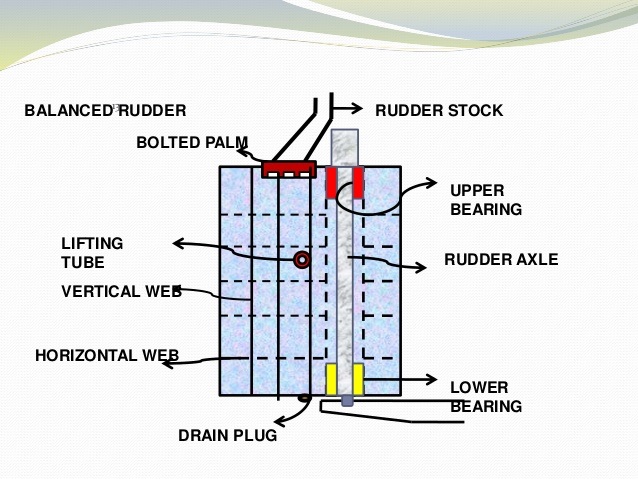Aspect Ratio = (Depth of Rudder / Width of Rudder)
The force on the rudder depend on:
- Area of the rudder
- The form of rudder
- The speed of the ship
- The angle of helm
Force acting on the rudder, F = k A V²
where,
k = Constant depending upon the shape of the rudder, water density, rudder angle. It varies from 570 to 610.
A = Area of rudder in m²
V = Speed of ship in m/s.
Rudder effectiveness can be improved by:
- Rudder arrangement in the propeller stream
- Increasing the rudder area,
- Better rudder type (e.g. spade rudder instead of semi-balanced rudder, high lift profiles or flap rudders),
- Steering gear which allows larger rudder angles than the customary 35°,
- Shorter rudder steering time (more powerful hydraulic pumps in steering gear).
Types of Rudder
-
Balanced rudder
The concept of a balanced rudder involved the shifting of the centre of rotation of the rudder to point approximately 1/2 of the way from the forward end to the after end. This meant that when the rudder was turned, the flow of water past the ship actively worked on the forward third to increase the angle of deflection, whereas the same flow acted on the after 1/2 to reduce the angle.


